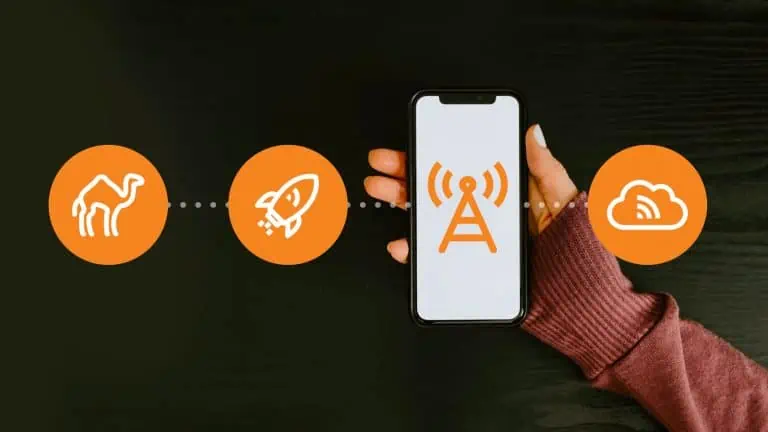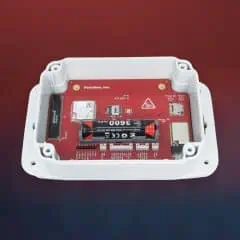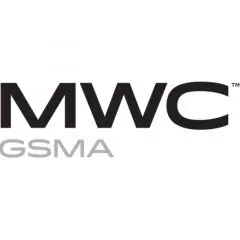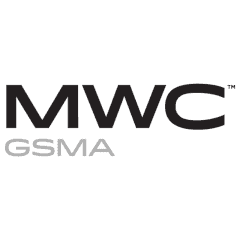Watch this video to walk through a useful checklist that will prove whether or not your business idea fits the market, and to learn how we can help you turn it into an appealing product.

The most powerful advantage shared by every virtual mobile operator is the ability to adapt the way they charge for services to suit – or drive – the evolving market. PortaBilling from PortaOne is the perfect tool for this: it enables online charging for voice calls, SMS, data, and all kinds of VAS (like IPTV). It also allows you to create an unlimited number of service wallets, quotas, and discount plans.
Sometimes an MNO will prefer Camel over Diameter as an online charging interface. In this case, the Pharos Charging Interworking Gateway can ensure a smooth integration with PortaBilling. It allows you to perform real-time checks of customer balances, calculate charges for consumed services (like phone calls), and prevent any unauthorized usage or balance overdrafts.
In this video, PortaOne head of PM Oleg Shetsov and BA Dmytro Lavraniuk speak with Owen Griffith, COO of Pharos Avantgard, about the origins of this solution, its benefits for PortaOne clients, and how the modern telco charging environment looks in South Africa.
If you use PortaBilling, you have everything you need to take advantage of the MVNO opportunity. Now, let’s work together to challenge the idea that deployment of an MVNO is “expensive and slow.”
Video transcript
Hi, my name is Oleg Shetsov and today with me is Dmytro Lavraniuk and Owen Griffith. So, let’s begin. Owen is from Pharos Avantgard, and we are going to speak about challenges for anybody who decided to own and launch a successful MVNO — what they face in their path from the idea to implementation. In this video you will learn how the partnership between PortaOne and Pharos can help you to get into the flow. If you watch this video and follow the steps, most likely you will be able to determine if your MVNO or service provider idea is viable, and how it can be converted into a great, appealing product.
What challenges do MVNO start-ups face today?
Dmytro: The common question that any business has to find an answer to is do we have a market fit. In other words, launching an idea before the market really needs it will result in a business that has no customers or, alternatively, starting a company when the market is fully settled will guarantee fierce competition.
The very first challenge for an MVNO startup will be to find the right niche. For example, one can opt for selling a product tailored to a specific audience, such as youth, business, media, entertainment, migrants, or tourists.
Oleg: Let’s assume I have a great business idea. What’s next?
Dmytro: Well, it is important to realize that the implementation of one’s business idea will immensely depend on the available infrastructure, that is, what is supported by your mobile operator. You can have a great business plan, but still not have the slightest idea about the technological mumbo-jumbo like Camel Phase, right?
Oleg: Of course. So the technologies supported by your mobile operator are quite important. But does it impact our mutual customers in any way?
Dmytro: So the vast majority of service providers and MVNOs today find it very promising to focus on the retail market, where prepaid services are dominating. For example, you could provide cheap voice call minutes to student communities who are frequently calling home.
In order to offer such exceptional prepaid services, operators would normally need the online charging engine. Of course, one could always do the offline billing, but this imposes a risk when a mobile subscriber uses more than their subscription allows and the operator reports losses after all.
Another challenge for an MVNO is to deploy real-time charging for subscribers’ transactions and sessions.
Oleg: So real-time charging is a challenge, right? What’s needed to get mobile services charged in the real time?
How to charge mobile services in real-time
Dmytro: Like I said, you need to have online charging system for this. That is the system that will be responsible for charging your mobile subscribers and implementation of your mobile products. Your mobile operator needs to have online charging interfaces towards an MVNO. Popular ones are Radius, Diameter, and Camel. And without online charging, your potential subscriber base may be quite limited to businesses or credit customers.
Oleg: In what cases does PortaOne bring technology partners in?
Dmytro: For instance, when mobile operators require the support of Camel in such cases, we recommend using solutions from our technology partners, such as the Pharos Charging Interworking Gateway.
Due to this integration an MVNO can perform real-time checks of the customer’s balance. For example, for various services calculating the amount to charge for consumed services, voice calls, or anything else to ensure that there is no unauthorized usage or balance overdraft.
About Pharos
Oleg: All right, Owen. Can you tell us more about Pharos and why MVNOs might need your solutions?
Owen: Pharos Avantgard, is a company based out of South Africa, here on the tip of Africa. We’ve been going for about 25 years serving operators in our region.
We’re a software company specializing in the telco space. We’re really passionate about real-time services; we’ve made a name for ourselves doing things in real-time, doing things in the VAS space, doing things with SMS, with USSD, with prepaid, location-based services, and many other things. You can check out our website.
Real-time charging is one of the areas that’s often misunderstood. It’s a very convenient user experience to have a prepaid account. But in order to facilitate that, technically, it has its challenges. Because mobile networks were never designed with prepaid in mind. They were always designed to do postpaid and make CDRs and you rate and charge those later on and that’s all fine. So, prepaid was always a retrofit to mobile networks, and protocols like Camel have been developed to mitigate that and make it a bit easier to launch prepaid services.
However, Camel is very much the preserve of mobile operators, and they speak Camel between each other, they speak Camel internally, and it’s a good protocol, but it’s not friendly and not easy for third parties to integrate with.
That’s where our Charging Interworking Gateway comes in. It takes all the complexities of Camel and ring fences it and exposes the functions that Camel offers via a simple Diameter interface. So, that’s one of the things that Pharos is particularly proud of, is our Charging Interworking Gateway and the work that we’ve done with PortaOne.
Dmytro: Now, basically any MVNO can benefit from the PortaOne and Pharos joint efforts. You can focus on providing an exceptional customer experience and growing your subscriber base, while the PortaOne MVNO billing software and the Pharos Charging Interworking Gateway can both help you scale while reducing your operational costs.
Interoperability between PortaBilling and the Pharos Charging Interworking Gateway
Oleg: It sounds very promising, Dmytro. So, can you tell us how the interoperability between PortaBilling and the Pharos Interworking Gateway actually went? What happened, and how did we deliver?
Dmytro: The PortaBilling online charging system is fully converged. It enables charging for voice calls, SMS, data, and value-added services such as IPTV and ringtones, and creating an unlimited number of service wallets, quotas, discount plans and so on.
One of our customers who decided to launch an MVNO needed a Camel gateway, but they had no desire to develop this from scratch. So their choice was the Pharos Charging Interworking Gateway. Hence, our engineers just had to verify that all intended charging scenarios work fine when subscribers start enjoying their new services. Luckily, PortaOne and Pharos have enough experience in the domain. So we just had to quickly adjust some minor pieces in our software to ensure that PortaBilling supports real-time charging for domestic and roaming calls, SMS, and even USSD.
Real-time charging for USSD sessions: the South African market
Oleg: You said USSD? Charging for USSD? Owen, can you tell us about this and in what situation it happens? How come USSD sessions are not free?
Owen: It’s a very interesting question and something that really started out in the South African market, where the operators wanted to monetize USSD. Instead of it being a traditionally free service, there are all sorts of interesting things that are done with USSD in the South African market, and one of the operators that we were serving at the time requested this functionality, and we developed it on our USSD gateway.
It’s another one of the products that we provide; it’s a really high-performance carrier grade USSD gateway that has a real-time charging component.
A lot of people scratch their heads, and say charging and USSD doesn’t really make sense. But there are significant monetization opportunities when done right; you can create value using USSD services and in our market, we found that people are happy to pay for those.
It’s an interesting approach: a combination of duration and intervals. For example, in this market you charge for every 20 seconds of usage of USSD. So it’s kind of like a voice call because the USSD has a session nature, but it also has an event nature. It’s a bit of a strange one, but it has been very successful in the South African market.
I’m sure other operators might find that useful, that it is possible to real-time charge USSD if you should desire to do.
Dmytro: In order to help service providers who are operating in markets where USSD services are in demand, PortaOne also implemented real-time charging over the Diameter protocol. These services can also be monetized. Just as an example: now, when a subscriber dials, for instance, star 102, star 4 hash to change their current package, the service provider is able to charge them, let’s say, 20 cents for this request, and even depending on the session duration.
Oleg: But I guess there is some more about it, like if even the provider, for instance, in MVNO does not want to charge anything for USSD. PortaBilling provides a way to account for vendor charges, for instance. If your MNO charges for USSD, then you can create proper charges for vendors, which is also helpful for understanding your pure costs and expenses on the MNO side.
MVNOs from idea to implementation: a step-by-step plan
Oleg: So, Dmytro, let’s walk through the steps that are normally taken by the MVNO or service provider, from idea to successful implementation.
Dmytro: There is no silver bullet or some secret sauce. It’s just four basic steps, where step one is getting the agreement with your mobile operator. You just need to find out what options and interfaces are open for an MVNO in your market.
Step number two is that you have to decide what type of MVNO you want to be, as the configuration and infrastructure of your mobile core network will depend on this. The more complete and more advanced the solution, the bigger your capabilities should be.
Step number three is to find a reliable technology partner. You can get support from industry experts like PortaOne and Pharos if your own experience does not suffice. And finally, step four is to focus on marketing and billing. MVNO is just another business model. You need to know where, why, and how to bill your customers, and let us – PortaOne – help you choose the right solution.
Is launching an MVNO still expensive in 2021?
Oleg: Dmytro, there is a strong opinion, or even, we can say, belief, that launching an MVNO is extremely expensive. Does this belief have grounds? Is it still the case in 2021? Is it a huge investment, or something really that smaller companies can afford?
Dmytro: Well, this in fact depends on multiple factors: local legislation, competition, and type of MVNO to be launched, be it branded reseller, light, or full MVNO. The majority of MVNOs launched recently are resellers of existing mobile operators or light MVNOs (those who just own their own billing systems). This way operators can start selling mobile services with minimum investments and there is even a story about our customer in Norway, from the times when local telecoms did not support API for resellers and MVNOs. Every time they had to activate a new SIM card, they were forced to call their mobile operator.
Of course, it was long ago, many years ago, but at those times mobile operators did not provide online charging, did not provide usage records, or usage records could be delayed for months. Still, our customer was selling mobile services, and quite succeeded in that segment.
Now the situation is very different and then MNOs provide access to real-time charging protocols, and these protocols are standardized. Thus you can launch an MVNO or a service provider for low-cost prepaid segments. To make your own product offering more competitive and differentiated from your mobile operator, you need a billing system. If you are our customer, you already have a decent billing system.
A quick recap of all the steps for launching an MVNO
Dmytro: Let me summarize the four steps that we were just mentioning. Step number one is to get the agreement with your mobile operator. Step two is deciding what type of MVNO you want to be. Step three is to find a reliable technology provider, like PortaOne and Pharos. Step four is to focus on marketing and billing rather than on a technology stack.
PortaOne and Pharos will enable real-time charging of your voice, SMS, and USSD services so that you don’t need to integrate your billing solution into the mobile core on your own.
How to contact PortaOne to get help with launching an MVNO
Oleg: If you have a business idea, and you would like to validate it, or you already have PortaBilling and want to add mobile services to your portfolio, please reach out to us, and we’ll be more than happy to help you with your move, with your project toward getting mobile subscribers, increasing your subscriber base, and selling great mobile products. We’re happy to be here, and we’re happy to help you with the mobile segment.
Thank you, Owen, thank you Dmytro, and thanks to everyone watching. I hope you have enjoyed this. Contact us and let’s make your mobile story!


















